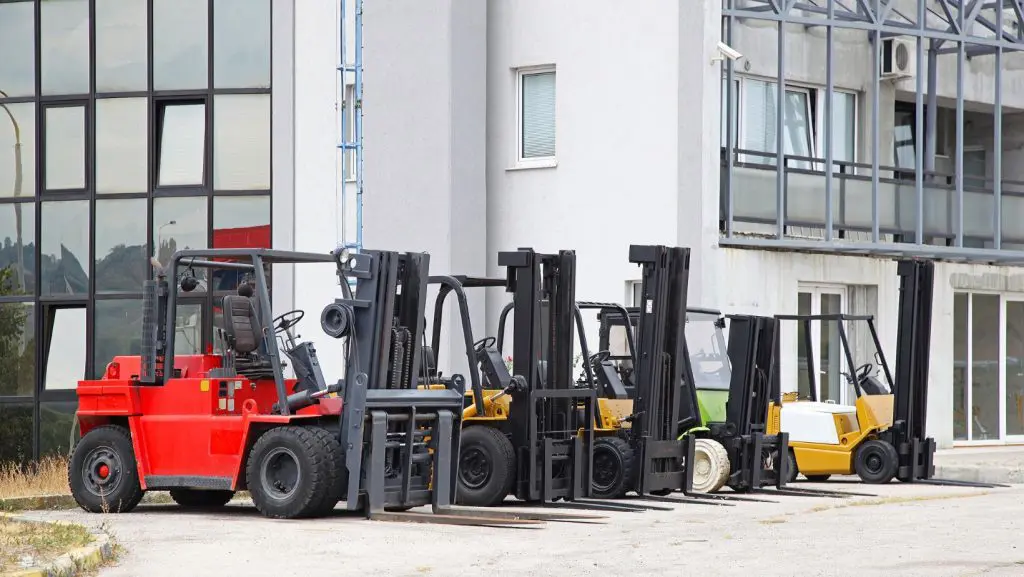If you want to become a certified forklift operator, you must pass a forklift theory test. This exam will assess your knowledge of safety procedures, operational guidelines, and legal requirements that are essential for operating a forklift in various work environments. While it may seem daunting at first, understanding the test’s structure and key topics will help you pass that all-important final test.
In this guide, we break down the forklift theory test into its main components and provide you with valuable tips to help you ace the exam. Whether you are a complete novice or you’re an experienced forklift operator looking to refresh your knowledge, this guide will set you on the right path to success.
- What is a Forklift Certification?
- The Forklift Theory Test
- Tips for Success in the Forklift Theory Test
- Forklift Theory Test: Sample Questions
- Pass Your Forklift Test with Ease with HL Training
What is a Forklift Certification?
A forklift certification is an official recognition that an individual has been trained and possesses the skills to operate a forklift. In the UK, forklift operator certifications can be accredited by ITSSAR, AITT, and RTITB.
To gain a forklift certification, an individual must complete three separate tests: the forklift theory test, the practical test, and a pre-use check test. These tests will assess an individual’s ability to operate a forklift as a whole, including how to perform certain loading and unloading tasks, recall safety procedures, and identify workplace hazards, just to name a few.
The Forklift Theory Test
A forklift theory test is a crucial element of a forklift operator certification. Comprised of 25 questions, the test will have five open-ended questions and 20 multiple-choice questions that you must answer within 30 minutes. This exam is used to test an individual’s knowledge of forklift operation, safety procedures, and the relevant regulations surrounding forklifts. Some topics you may be assessed on include:
- Forklift Components
- Pre-Use Operational Checks
- Loading Handling Techniques
- Stability Principles
- Manoeuvring in Tight Spaces
- Operator Responsibilities
- Employer Responsibilities
- Proper Use of Controls and Instruments
- Hazard Awareness
- Emergency Procedures
You must score a minimum of 80% to pass. However, if you fail there may be an opportunity to take a second attempt after remedial training. Although, this is dependent on the results of the first attempt, and is based on the instructor’s discretion.
Tips for Success in the Forklift Theory Test
If you are considering taking your forklift theory test soon, here are a few tips and tricks to point you in the right direction.
1. Study, Study, Study
Just like your school exams or your driving theory exam, it is important you take the time to read up on the relevant material to ensure you have learned all the correct material. From safety regulations to hazard awareness, load handling techniques and more, creating a checklist of all the material you must cover can come in handy when planning what you need to know. By dedicating some time to studying and reviewing the material, you will have a greater chance of remembering the material ready for the exam.
2. Manage Your Time Effectively
Don’t cram it all in the night before! Make sure you set out enough time to slowly go through the material in depth so you actually understand the content rather than memorising it for the sake of it. You will find you remember the material more clearly when you actually understand it.
3. Try Using Some Sample Questions
Sample questions are a great way of getting to grips with the style of questions you will encounter in the exam. They allow you to test your understanding and become more familiar with the format of the test. Plus, these questions may even come up in your exam!
4. Ask Your Instructor for Clarification Where Doubt Lies
If you have any questions or queries about the test, don’t hesitate to ask for further clarification. This will ensure that you fully understand what the questions are asking of you.
Forklift Theory Test: Sample Questions
As sample questions are the best way to learn, here are some examples of the types of written questions you may encounter during your forklift theory exam.
What is an Approved Code of Practice?
An approved code of practice advises duty holders on complying with legislation. This ensures a safe working environment for all staff, with forklift operators equipped with the knowledge and skills to handle a forklift. An example of an approved code of practice is the Health and Safety Executive, which encourages the safe operation of forklifts.
Why is there an increased risk of a truck tipping forward when tilting a load forward at a height?
High reach trucks have a carriage tilt, and when a load is tilted forward, the combined centre of gravity also shifts forward, causing an increase in weight at the front of a forklift. This can increase the chance of injury to both the operator and other employees in the area.
How do you proceed when forward visibility is obstructed or blocked?
When forward visibility is obstructed or blocked, you should drive in reverse if possible to maintain a clear view of the path. If reverse driving isn’t feasible, you should use a spotter to guide you. Once you have decided on how you will manoeuvre the forklift, you should then proceed slowly and cautiously. If there are any intersections or blind spots, you should use your horn. If possible, you should consider alternative routes that have better visibility.
What should your first concern be as a forklift operator?
Before you start the forklift, you should first check that the forklift is in a safe and proper operating condition. By conducting a pre-use inspection of the forklift, you will be able to find any damage. You should then check the forklift when it is running. Depending on site policy and PPE availability, you can examine the tyres, oil, water and hydraulic fluid levels. The forks, brakes, lights, horn and steering wheel should also be checked before you begin operating.
Pass Your Forklift Test with Ease with HL Training
Becoming a forklift operator doesn’t have to be hard. By setting time aside to study for your forklift theory exam, you can achieve your forklift certification in no time! At HL Training, we offer accredited Forklift Operator Training so you can gain the skills and knowledge to become a skilled forklift operator. From novices to refresher training, we have a training course for you! Take a look at our Forklift Operator Training today and get started on your journey to becoming a forklift operator.
FAQs
How many questions are on the forklift test?
There are 25 questions on the forklift theory test, all of which are now multiple-choice. You will have an hour to answer all of the questions.
Is a forklift theory test hard?
A forklift theory test can be tough, but with an appropriate amount of studying, it doesn’t have to be. By taking the time to study, managing your time effectively and trying some sample questions before the day of your test, you can have the best chances of success!
What’s involved in a forklift test?
To gain your forklift certification, you must pass a practical test, a theory test and a pre-use check test. The practical test assesses your ability to safely operate a forklift in a variety of situations. The theory test consists of 25 questions testing your knowledge of forklift operation. Finally, the pre-use check test ensures you follow the correct procedure of checking the forklift is fit for use before you begin operation.
Related Articles
How to Pass Your Practical Forklift Test
How Long Does Forklift Certification Last?







